Abstract
Antibodies to thyroglobulin in a titre of 1:25 or more were found in 16·2% of women and 4·3% of men between the ages of 21 and 80 years in a random sample of the population from a general practice in the north-east of England. The incidence of antibodies was highest in the seventh decade in both sexes. High antibody titres (1:78125 or more) were found in 4·6% of women and 1·6% of men and it is suggested that this may represent the incidence of diffuse thyroiditis in the population.
Significant thyroid enlargement was found in 12% of women and 0·9% of men, the corrected incidence of goitre obtained by averaging the frequency of goitres in each decade between 21 and 80 years was 8·9% and 0·9% respectively.
Full text
PDF
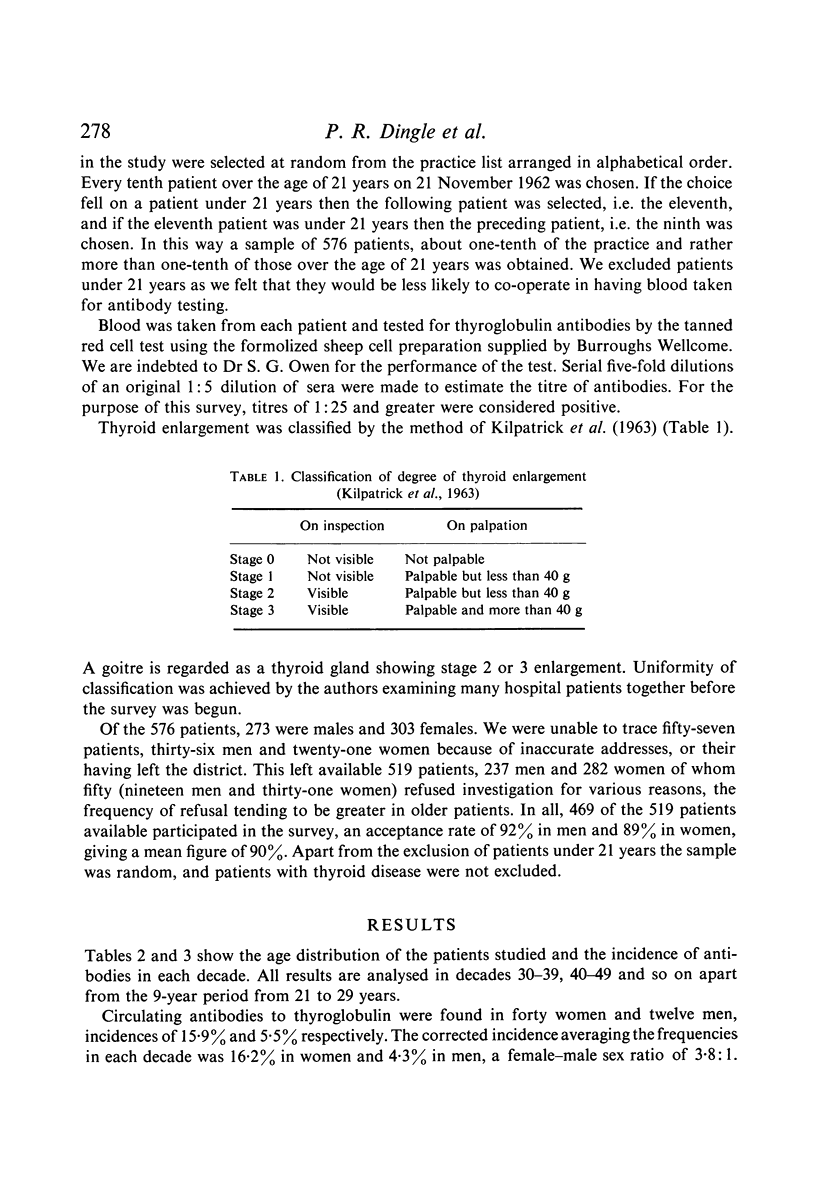

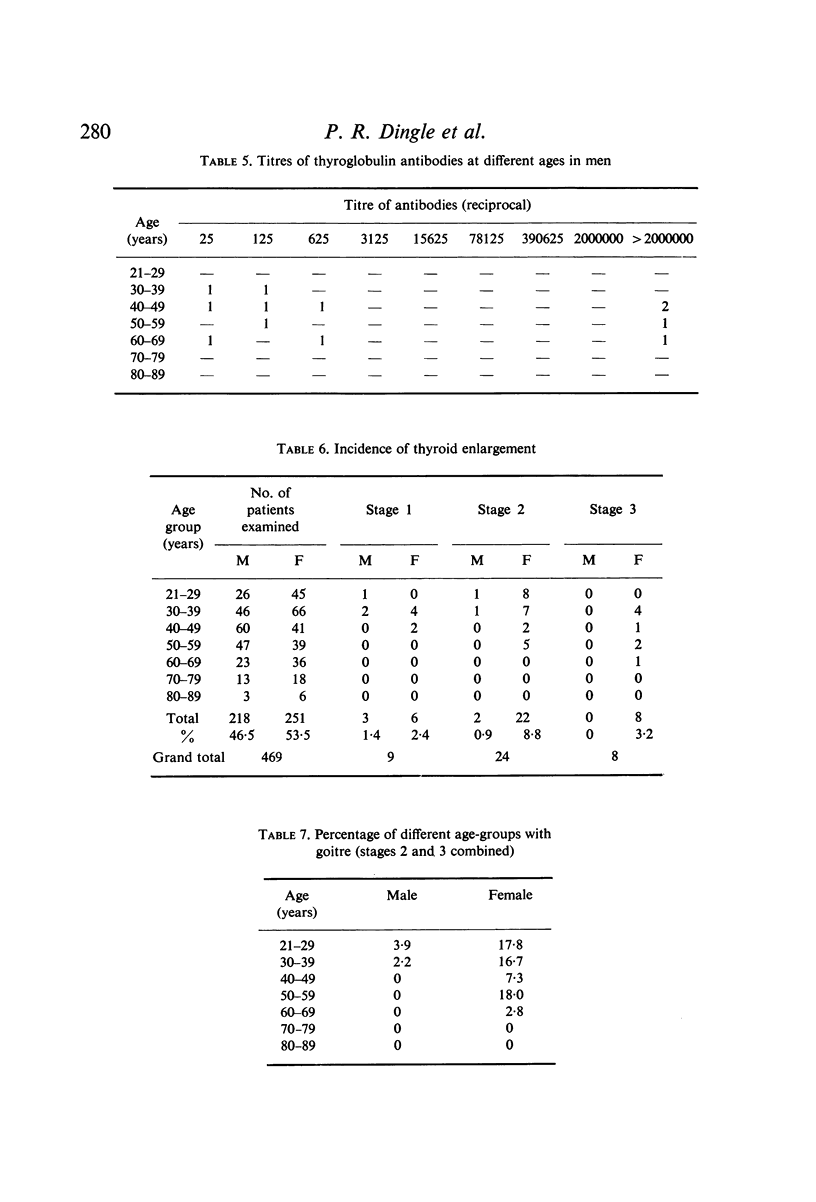
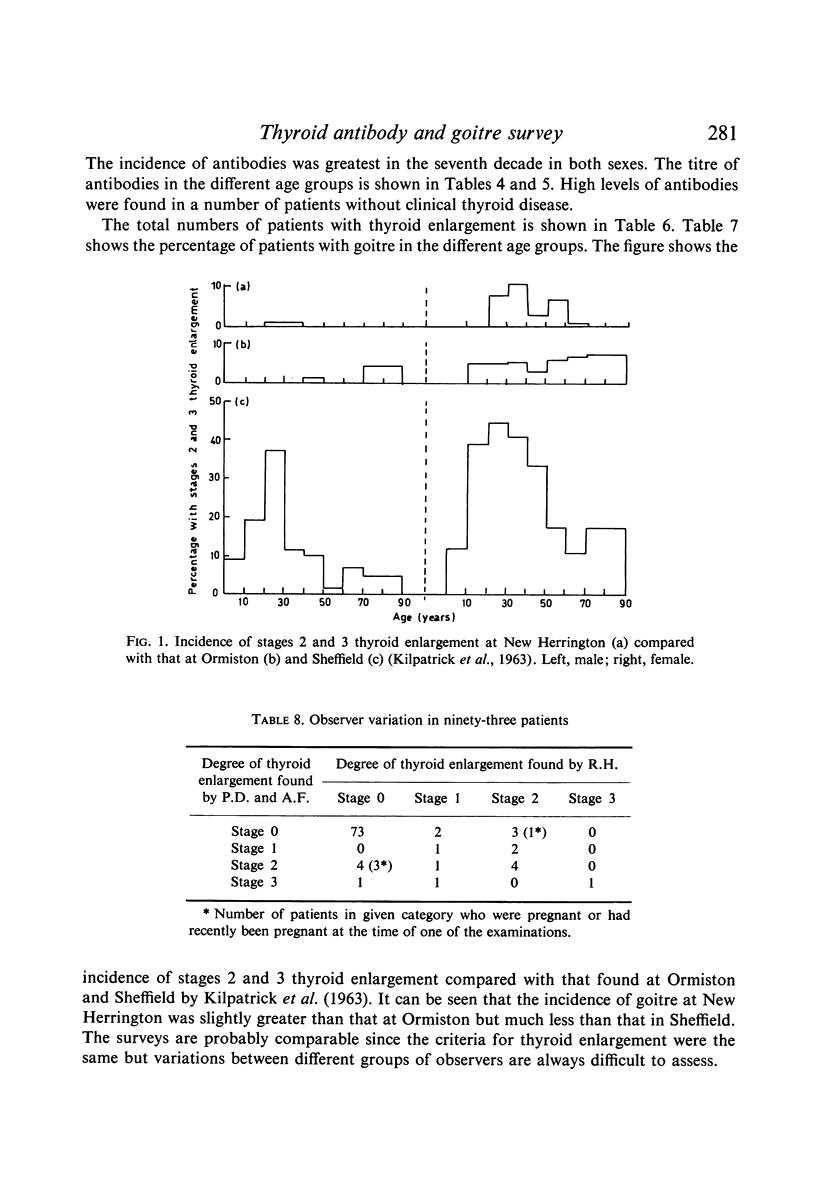
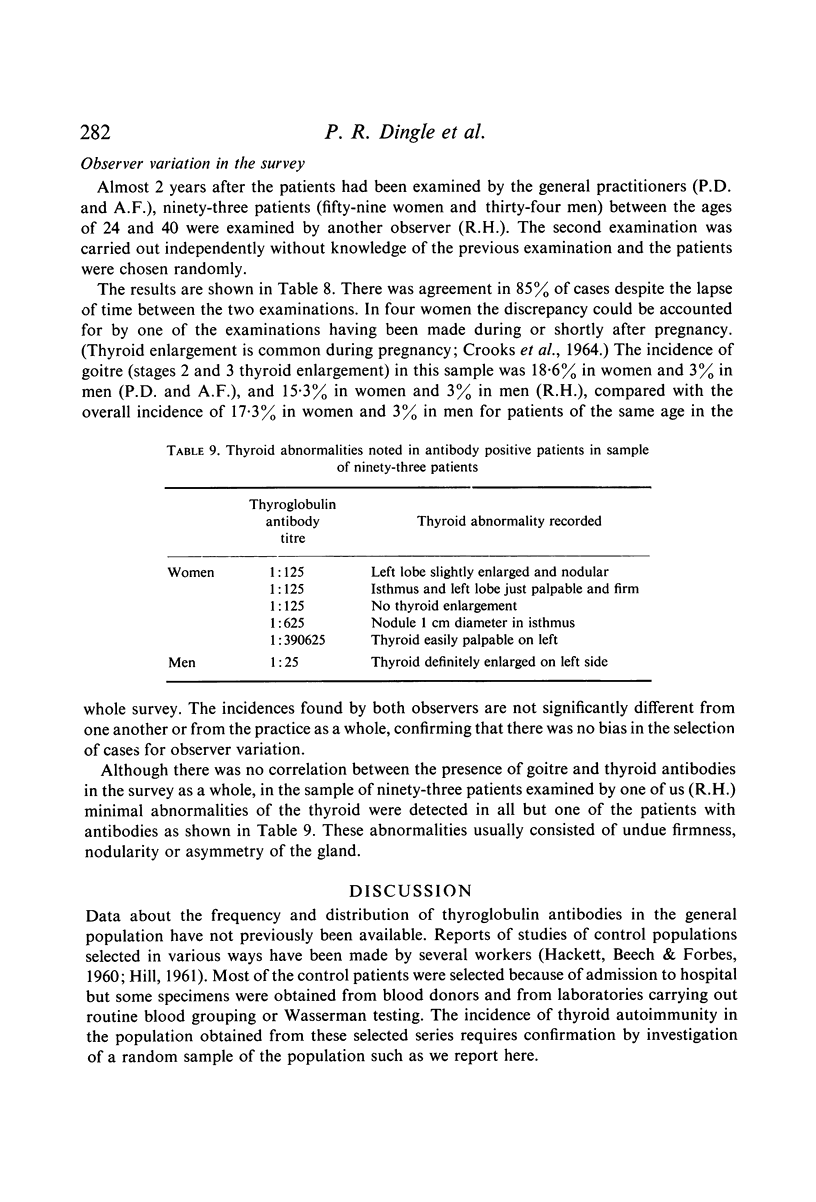

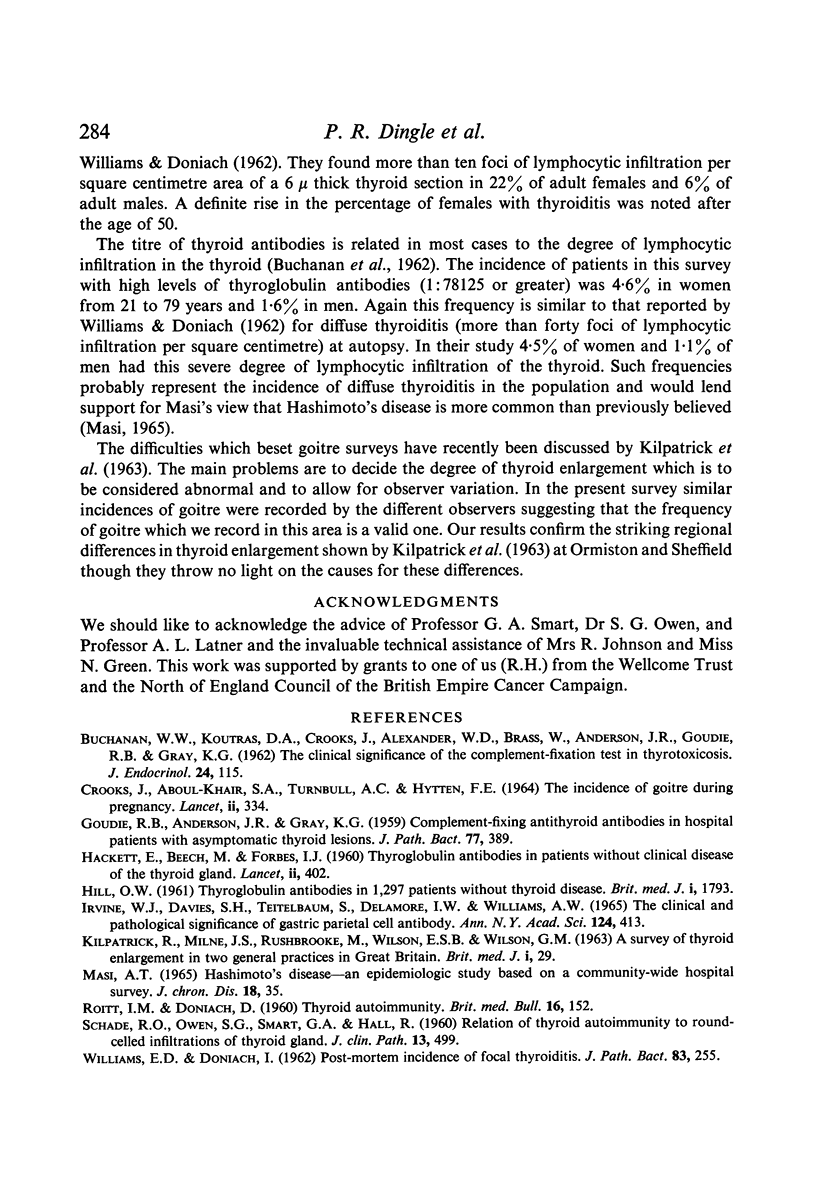
Selected References
These references are in PubMed. This may not be the complete list of references from this article.
- BUCHANAN W. W., KOUTRAS D. A., CROOKS J., ALEXANDER W. D., BRASS W., ANDERSON J. R., GOUDIE R. B., GRAY K. G. The clinical significance of the complement fixation test in thyrotoxicosis. J Endocrinol. 1962 Apr;24:115–125. doi: 10.1677/joe.0.0240115. [DOI] [PubMed] [Google Scholar]
- CROOKS J., ABOUL-KHAIR S. A., TURNBULL A. C., HYTTEN F. E. THE INCIDENCE OF GOITRE DURING PREGNANCY. Lancet. 1964 Aug 15;2(7355):334–336. doi: 10.1016/s0140-6736(64)90277-6. [DOI] [PubMed] [Google Scholar]
- GOUDIE R. B., ANDERSON J. R., GRAY K. G. Complement-fixing antithyroid antibodies in hospital patients with asymptomatic thyroid lesions. J Pathol Bacteriol. 1959 Apr;77(2):389–400. doi: 10.1002/path.1700770208. [DOI] [PubMed] [Google Scholar]
- HACKETT E., BEECH M., FORBES I. J. Thyrogloubulin antibodies in patients without clinical disease of the thyroid gland. Lancet. 1960 Aug 20;2(7147):402–404. doi: 10.1016/s0140-6736(60)92842-7. [DOI] [PubMed] [Google Scholar]
- HILL O. W. Thyroglobulin antibodies in 1,297 patients without thyroid disease. Br Med J. 1961 Jun 24;1(5242):1793–1796. doi: 10.1136/bmj.1.5242.1793. [DOI] [PMC free article] [PubMed] [Google Scholar]
- KILPATRICK R., MILNE J. S., RUSHBROOKE M., WILSON ES WILSON G. M. A survey of thyroid enlargement in two general practices in Great Britain. Br Med J. 1963 Jan 5;1(5322):29–34. doi: 10.1136/bmj.1.5322.29. [DOI] [PMC free article] [PubMed] [Google Scholar]
- MASI A. T. HASHIMOTO'S DISEASE. AN EPIDEMIOLOGICAL STUDY BASED ON A COMMUNITY-WIDE HOSPITAL SURVEY. J Chronic Dis. 1965 Jan;18:35–57. doi: 10.1016/0021-9681(65)90052-4. [DOI] [PubMed] [Google Scholar]
- ROITT I. M., DONIACH D. Thyroid auto-immunity. Br Med Bull. 1960 May;16:152–158. doi: 10.1093/oxfordjournals.bmb.a069816. [DOI] [PubMed] [Google Scholar]
- SCHADE R. O., OWEN S. G., SMART G. A., HALL R. The relation of thyroid auto-immunity to round-celled infiltration of the thyroid gland. J Clin Pathol. 1960 Nov;13:499–501. doi: 10.1136/jcp.13.6.499. [DOI] [PMC free article] [PubMed] [Google Scholar]
- WILLIAMS E. D., DONIACH I. The post-mortem incidence of focal thyroiditis. J Pathol Bacteriol. 1962 Jan;83:255–264. doi: 10.1002/path.1700830127. [DOI] [PubMed] [Google Scholar]


